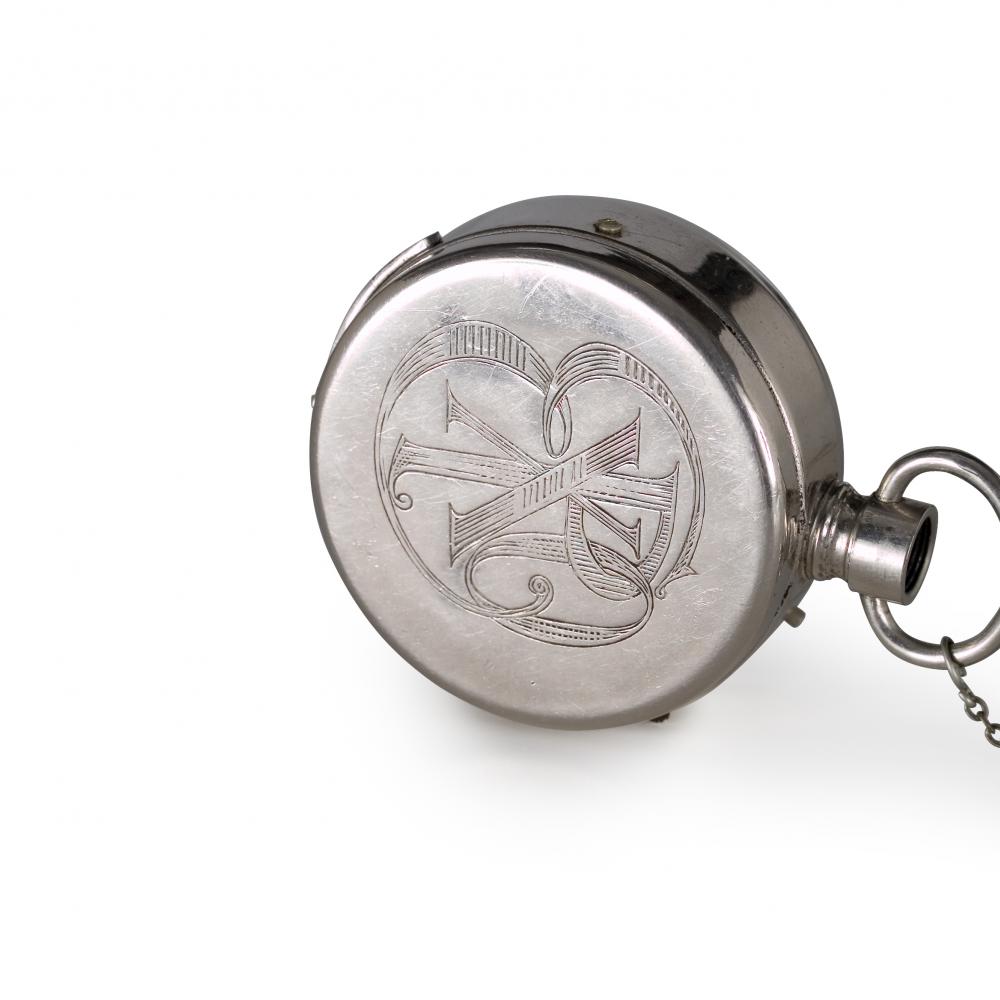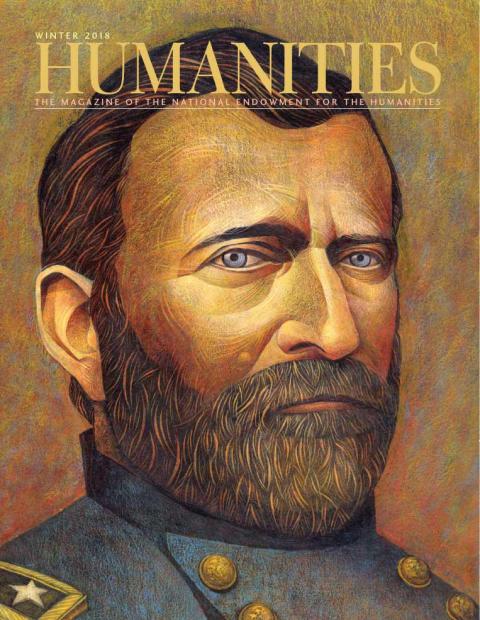The NEH-supported California Museum of Photography in Riverside is home to many cameras, including the Expo watch camera of the early twentieth century. Disguised as an ordinary timepiece and designed to slip into a pocket, the Expo watch camera was, however, no toy. Built to take quality pictures and photographic portraits, with or without the knowledge of the person being photographed, it was manufactured and sold in the United States from 1905 to 1939. At a time when photographers labored with unwieldy equipment, the watch camera was informal enough to put people at ease. The mini camera’s patented parts included its lilliputian lens, film holder, and shutter. Another novelty was a film cartridge that functioned as a single unit, an innovation not used again in cameras until 1963.
England’s Queen Alexandra owned the Expo’s predecessor, the Ticka. Both devices—a snap shooter’s dream—were patented by Swedish designer Magnus Niell. The queen found Niell’s camera handy in getting candid shots of the royal family. One immensely popular impromptu image, “The King, George and his two sons,” was published in the Queen’s Christmas Gift Book of 1908, which sold a half million copies. This ship deck photo captured an unflappable Edward VII in the background, donning an admiral’s uniform and steadfastly scanning the horizon, while the future George V, in the foreground, casts a proud eye on his young sons in sailor suits, the future George VI and Edward VIII.
According to the manufacturer, Alexandra praised the Ticka in a letter, saying she was “very pleased with the pictures she has taken with it.”


